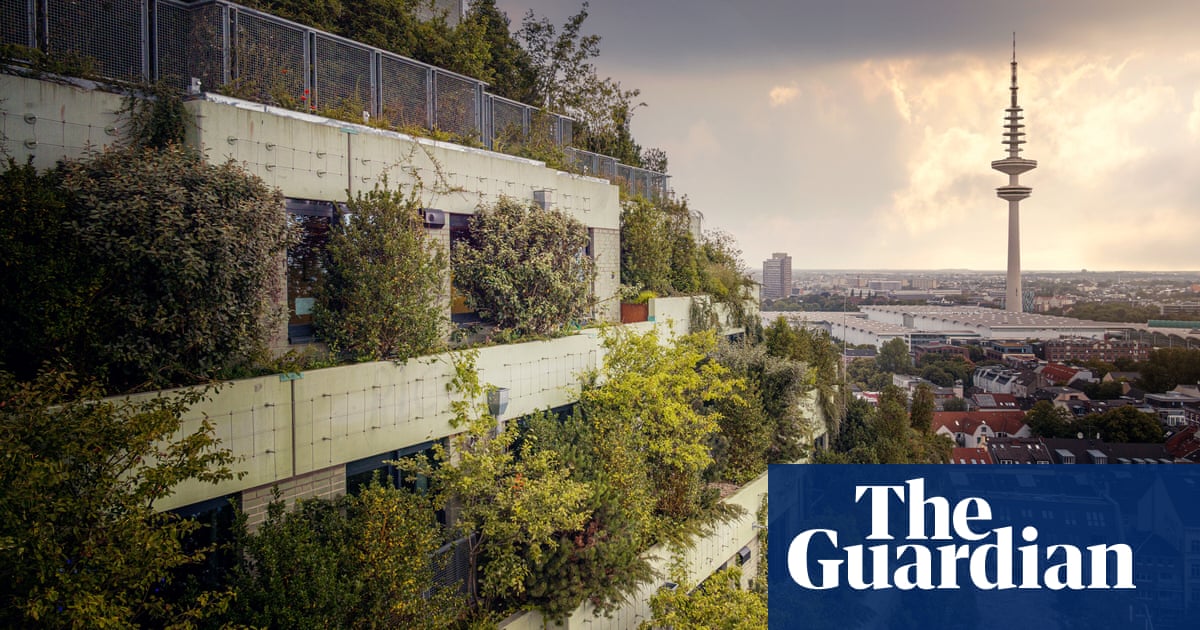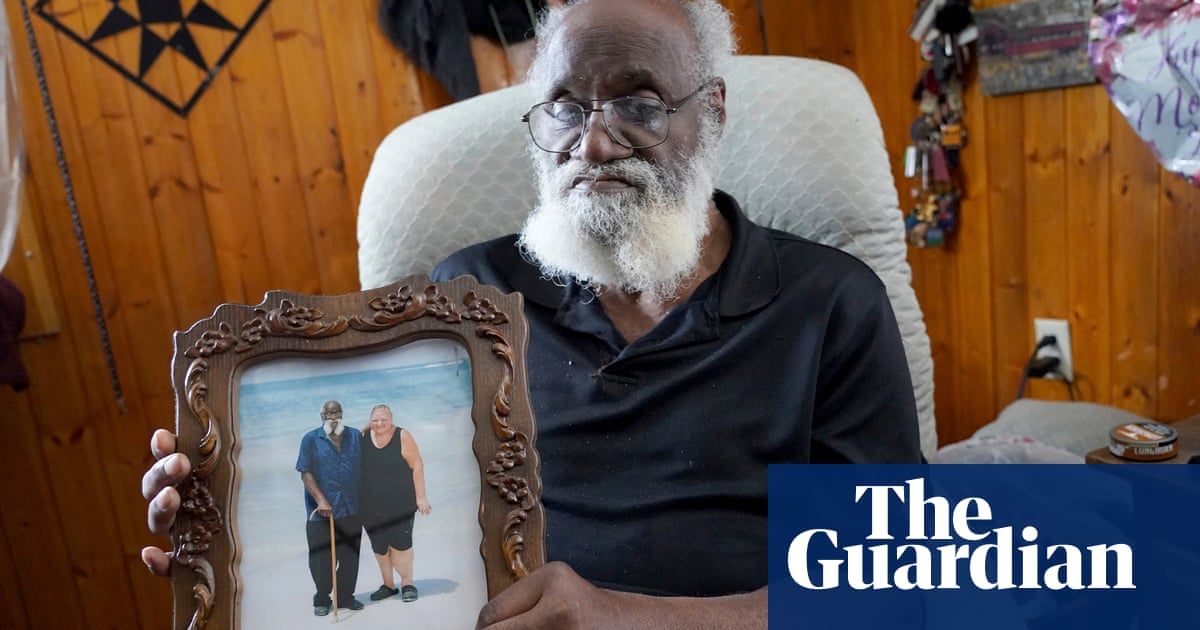When Fritz Schumacher laid out his vision for Hamburg a century ago, the sketch looked more like a fern than a town plan. Fronds of urban development radiated from the centre to tickle the countryside, bristling with dense rows of housing. The white spaces in between were to be filled with parks and playgrounds.
Schumacher was Hamburgâs chief building officer in the early 20th century, and a pioneer of green cities with widespread access to nature. âBuilding sites emerge even if you donât invest in them,â he warned in 1932. âPublic spaces disappear if you donât invest in them.â
Not all of Schumacherâs ideas survived the wartime bombs that blew Hamburg apart, or the rebuilding process, but his schematic of the ânatural development of the organism Hamburgâ has steered the city down a greener path than its neighbours. Stitched together by a series of green axes and rings, nature reserves make up more of the state of Hamburg than any of the other federal states in Germany â nearly 10%. âWe call it Hamburgâs green network,â says Barbara Engelschall of the cityâs environment authority.
But even forward-thinking cities such as Hamburg have struggled to break free from the instinct to pave over plants. In 2018, conservation groups petitioned the city to preserve its green space after Olaf Scholz, the centre-left mayor who would go on to become chancellor of the country, pledged to build 10,000 flats in the pricey port each year. The demand attracted 23,000 signatures and led to a rather German solution to nature conservation: a contract.
The authorities signed an agreement with the citizenâs initiative to protect 30% of Hamburgâs land area â 10% as untouchable nature reserves and 20% with a looser conservation status â and ensure the share of public green space in the city rises over time. The city also agreed to increase the biotope value, an index it uses to measure the quality of nature.
And the plan has been successful. A progress report in July found it had risen from 2019 reference values as result of efforts to upgrade grasslands, rewet moorlands and use nature-friendly conservation measures on land owned by city companies.
The contract also contains clauses that mean construction works that hurt nature in one part of town must be compensated for elsewhere. A similar flexibility governs the 20% of the city area under light conservation rules, allowing authorities to build on green areas if they save new ones.
It really is a âbig leverâ of change, says Malte Siegert, who negotiated the deal on behalf of the local branch of the Nature and Biodiversity Conservation Union (Nabu). He sympathises with calls for more affordable housing and says cities just have to think about where to build it and how to offset its impacts. âItâs a good compromise to say: yes, we will make the city more dense, but then do more to make the remaining green spaces really deliver an ecological service.â
Sophie, an actor who works at Good One Cafe in the Eimsbüttel district, says that the city does a good job of bringing greenery into every neighbourhood. Hamburg ranks highly in quality of life surveys, but she admits that residents are probably not aware of the politics behind what theyâre enjoying. âYou easily take things for granted when theyâre right outside your door.â
The scale of Hamburgâs hurdles varies from district to district. The industrial harbour has the highest levels of cemented surface â though what it lacks in greenery it makes up for in waterways â and deprived inner-city neighbourhoods such as St Georg and St Pauli are also heavy on concrete, though they sit close to parks. The latter is home to a vast anti-aircraft bunker from the second world war that reopened in July as an entertainment centre housing 23,000 plants on its public rooftop garden.
And, speaking from a park in front of the environment authorityâs office, surrounded by wild flower meadows thrumming with insects, Engelschall says there are challenges involved in putting the cityâs green ideals into practice. Increasing an areaâs biodiversity score means first measuring it â a mammoth task that she and her colleagues have been painstakingly working at for years â and understanding the local nuances of how to improve it. Training the cityâs time-strapped gardeners and changing the practices of private contractors can also take time.
Bernd-Ulrich Netz, who heads the cityâs conservation department, says there is also still a cultural hurdle to overcome which requires a shift in how people relate to nature. âThe classic English image of a castle with a green lawn is deep in the minds of many people. They couldnât imagine a castle with a meadow of flowers in front of it, even though it would be much more beautiful.â
after newsletter promotion
Volunteers have set out to change that in parks across the city. Luisa Schubert, who runs a hands-on ecology project for Hamburgâs city park association, says 160 people have signed up to her newsletter volunteering programme that seeks to foster stronger connections between people and nature. About 25 of them turn up on a given day to sow seeds, rake leaves, and plant shrubs.
âAlthough itâs work, I think they enjoy it â otherwise they wouldnât come,â says Schubert. One regular volunteer told her that he comes with his son to replace having a private garden, after having struggled to decide between living in a village or a city. Another recently held up a flower and told Schubert excitedly: âWildflowers change the world.â
On another day, Schubert was with a group of raucous third-grade pupils who suddenly fell silent upon seeing a dead squirrel. One of the children started a ceremony, she says, and they buried the animal together.
âThis is the kind of nature experience that will really influence kidsâ lives later on,â says Schubert.
What she hears most often from volunteers is a feeling of purpose, she says. âItâs so important amid this environmental, climate and biodiversity crisis to feel a little sense of fulfilment â like âI have done somethingâ, even on a small scale.â



